We transited the Panama Canal! Did you watch it on YouTube? 🙂
Background
Panama has been experiencing a severe drought. Gatún Lake, the body of freshwater that acts as the canal’s primary water source, has hit record-low water levels this year. Experts say the drought conditions have been exasperated by El Niño, a weather phenomenon that happens every 3-7 years. Typically, trade winds blow east to west along the equator in the Pacific Ocean, moving warm water from South America towards Asia. That warm water is then replaced by a process called upwelling, where colder water rises from the depths. During El Niño, trade winds weaken, and the warmer water temperatures along the West Coast of the Americas disrupt typical precipitation patterns.
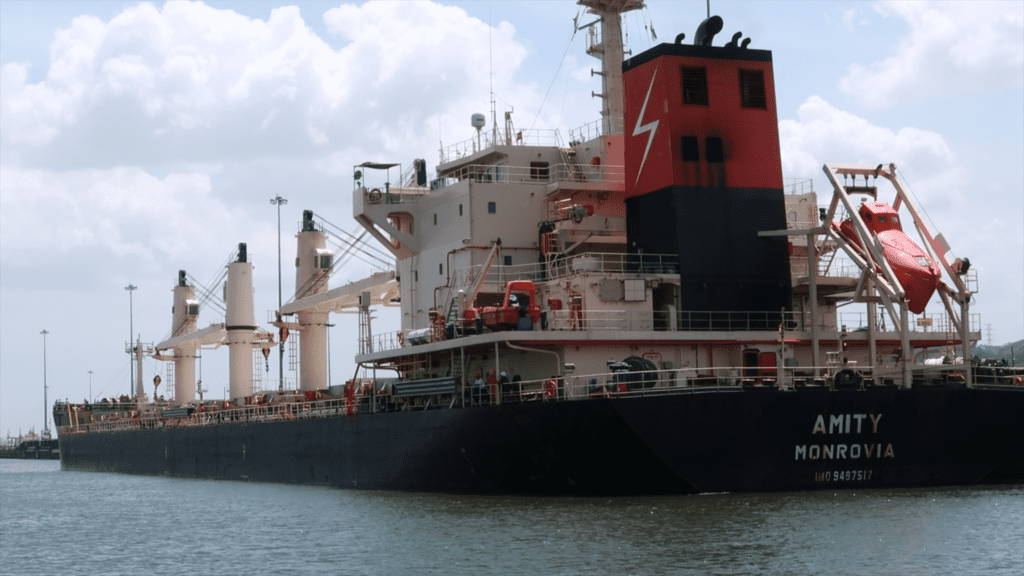
Gatún Lake also supplies drinking water for the region, so the low water levels have caused concern beyond canal operations. Consequently, the Panama Canal Authority has implemented restrictions meant to conserve water, such as lowering the canal’s depth and limiting the number of ships that pass through daily. These restrictions began in 2023 and have continued into 2024.
With that in mind, we reached out to an agent at the end of December 2023 to book a transit date ahead of time in hopes of avoiding any significant delays caused by the water restrictions. I have heard that other cruisers have been told they could not apply for a transit date until they were in the country and that the waitlist upon arrival was 50+ days. That was not our experience. Our agent submitted the necessary paperwork on our behalf and asked us for our preferred date. We requested the end of February 2024, and he came back with February 28th. I will include our agent’s information at the bottom of this post and the costs of transiting the canal in February 2024.
The Call
We arrived in Panama on February 4th and told our agent we were in the area. We checked into Shelter Bay Marina, a popular destination for cruisers preparing to transit the canal. They have a reasonably priced chandlery on site and shuttles to town to help you provision. Since we had time to kill, we, admittedly, procrastinated our preparations. We came to regret that on February 16th when we got a call from our agent. He explained that the Panama Canal Authority had decreased the number of ships allowed to pass through the canal to a record low number, effective that month. This change caused a shift in the schedule, and we needed to transit on February 20th, or we’d be pushed to the end of March. We eagerly accepted the 20th and found ourselves scrambling to prepare on short notice. We needed diesel, food, and water. We needed to clean, do laundry, and set up our guest cabin… We needed crew!
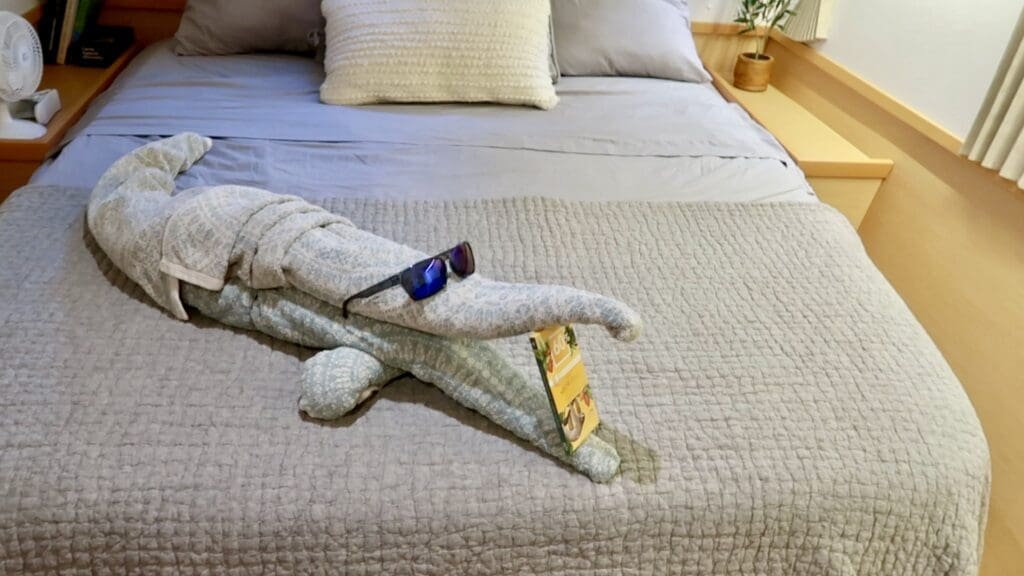
To transit the canal, you must have an advisor (provided by the canal), 4 line handlers, and a captain on board. Initially, we had planned to hire two local professional line handlers, and my parents and I would rotate handling the other two lines if needed. This way, we could switch off, and one of us could enjoy the canal responsibility-free at a time. My parents had booked flights to arrive in Panama on the 24th and leave on March 3rd. We thought this itinerary would give us plenty of wiggle room should our schedule shift- haha! So, I called my dad.
“Hey! Any chance your tickets to Panama are refundable?”
With three days’ notice, I was sure they wouldn’t make it, but my dad has an impressive track record of making shit happen… he called me back a few hours later: “We’ll see you tomorrow!”. He was able to re-book their flights to leave the next day, and their new itinerary was cheaper, so he got money back on both tickets!
The following few days were a whirlwind, but we got the boat ready, provisioned, and prepared the meals we’d serve the crew. At this point, we still didn’t know if we would be transiting in one or two days. If you can sustain a speed over 8kn, you qualify for a single-day transit, but it’s common for sailboats to spend the night in Gatún Lake and transit over two days. So, we were preparing for two and hoping for one. The expectation is to serve three hot meals (with meat) and provide bottled water for your advisor and any other hired help. To minimize my time in the galley during the transit, I decided to prepare as many aspects of our meals as possible ahead of time. Having my mom there was a tremendous help during this process! If you’re interested, I have included our full menu at the end of this post.
We left our slip in the marina, stopped by the fuel barge to get some diesel, and anchored out the day before our transit. Our agent contacted us that evening, informing us that the lines and fenders we had rented were ready to be picked up along with the two professional line handlers we’d hired. He confirmed we’d be transiting the canal in one day, so our advisor would board Sabado around 4AM (hence why the line handlers wanted to sleep aboard). Ray picked everything/everyone up in our dinghy. There was a language barrier, but we made do with broken Spanish, Google Translate, and caveman-like charades. We stashed the lines and fenders on the bow, served them dinner (we had eaten before we knew they’d be arriving that night), and got ready for bed. We got a call on the radio saying our advisor would arrive on a pilot boat at 4:45AM. We set our alarms and turned off the lights. One of the line handlers slept in the cockpit, the other in the salon.
Transit Day
The pilot boat arrived at 4:45AM on the dot. It pulled up alongside Sabado, shining bright spotlights into our cockpit. The line handlers we had hired held fenders in place, but our advisor leaped from their boat to ours before any contact was made. He introduced himself as Guillermo or “William, if you prefer.” He spoke excellent English.
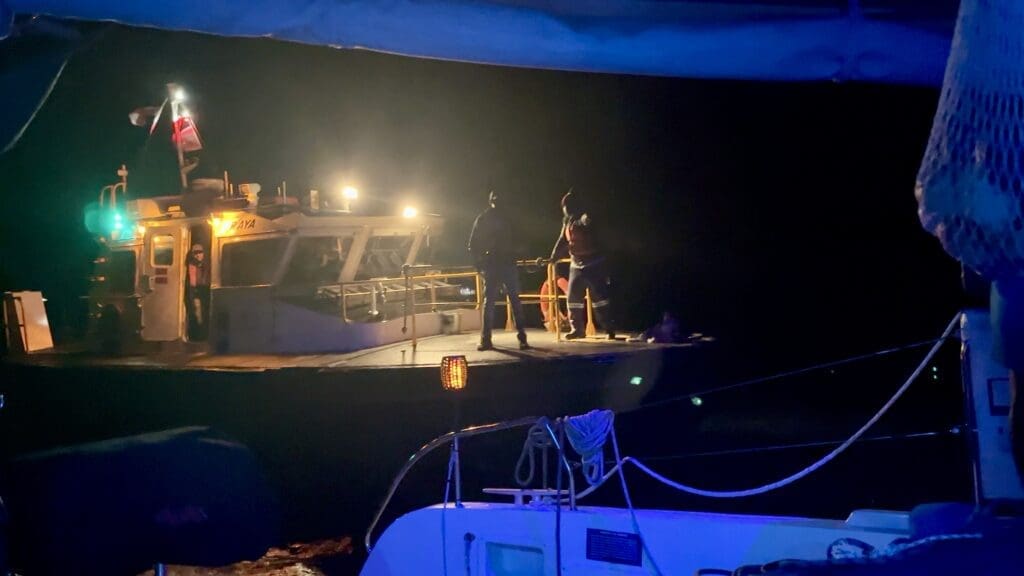
Ray poured everyone a cup of coffee, and we pulled up our anchor moments later. Shortly after passing under the Atlantic Bridge, Guillermo announced that we would be on the starboard side of a three-boat raft, meaning there would only be two active line handlers on Sabado during the first three locks. My parents and I were excited to kick back, drink our coffee, and witness the engineering marvel of the Panama Canal- but first, it was all hands on deck to raft up.
A 60ft monohull pulled up beside us. Their crew looked sharp in matching uniforms but had no Panamanian professionals besides their advisor aboard. As we were securing both boats together, I watched as they looped two lines onto our midship cleat but did not secure the other end to their boat. The lines began to droop into the water. I brought the issue to their attention, but by the time they began pulling the slack, the line had gotten caught under our fenders and was pulling them up. We all worked together to lift one fender at a time and untangle the line while holding another in place to keep our boats from touching. We managed to sort it out and secure all lines before the third boat, a smaller monohull, arrived on their port side. We had heard the third boat had had some trouble that morning, running over a mooring ball as they pulled up their anchor, so we were surprised to see they had freed their prop in the dark and made it in time!
Once our raft was complete, we began moving as a unit toward the first lock. A second round of coffee was poured as we listened to the sound of howler monkeys yelling over the drone of the engines. The sun began to rise as canal officials threw two messenger lines each to the outer boats. After seeing the monkey fists (weighted knots at the end of the messenger lines) in person, I was thankful we had covered our solar panels with cushions for the day- one rogue fist could easily shatter our primary power source!
The line handlers tied the messenger lines to our rental lines, and before we knew it, the doors began to close behind us. The first three locks (from the Atlantic side) lift ships to the lake, which sits 26m above sea level.
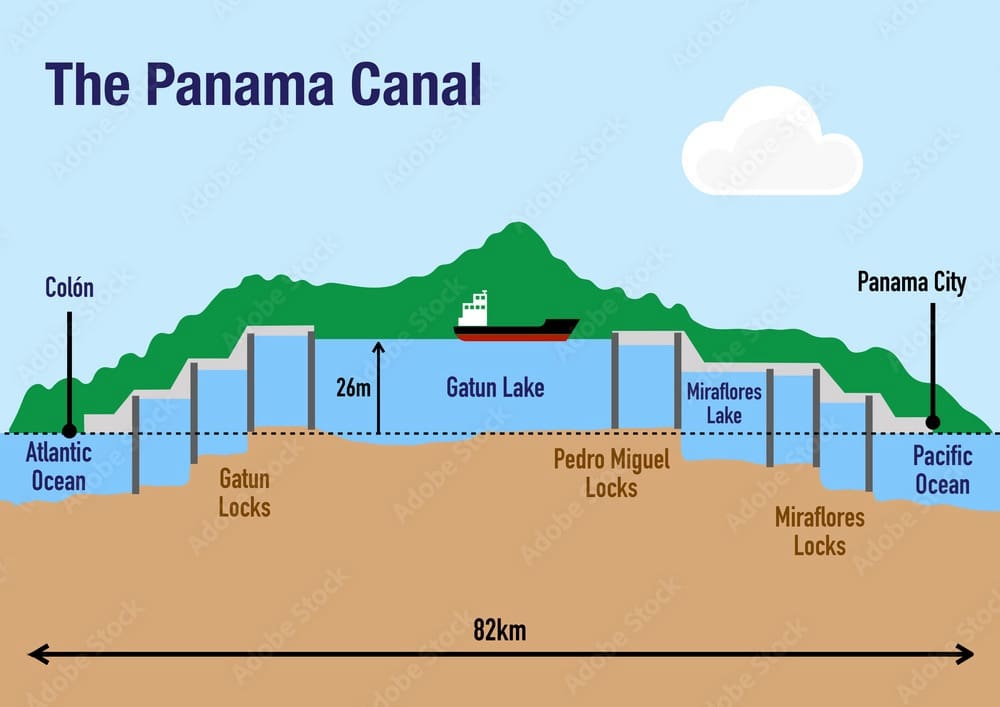
Once the doors have closed, water is pumped into the lock, raising the water level by ~2m per minute. We all watched in amazement as the water plumed before us, and our boats seemed to climb up the walls. The two line handlers on our starboard side worked with the two on the port side of the third boat in our raft to pull in the slack on the lines as we rose to the top of the lock.
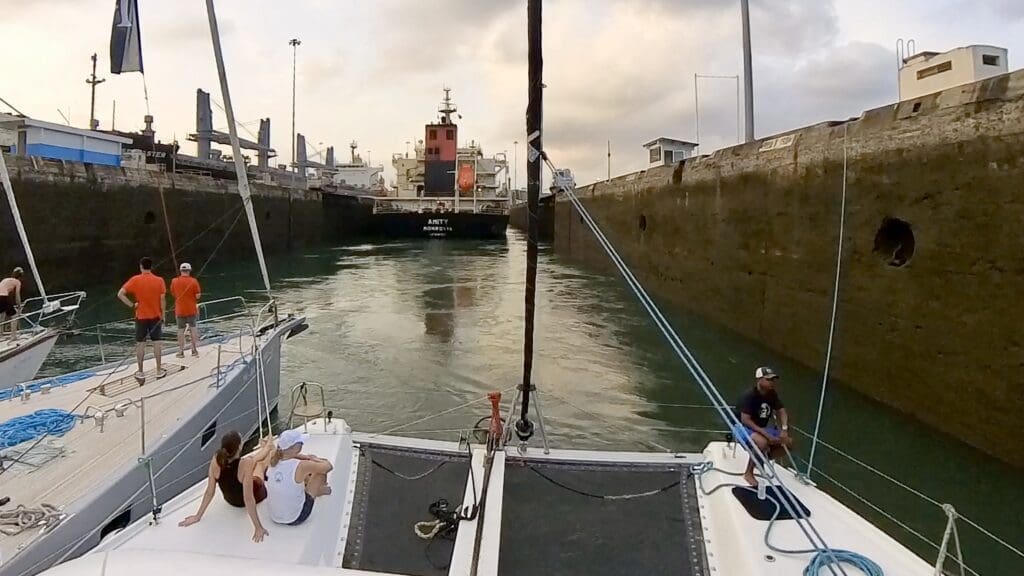
Once the lock was full, the doors opened in front of us, and the line handlers pulled until the end of the line with the monkey fist attached was back on board. We moved forward in the wake of Amity, the 176m-long cargo ship transiting the canal in front of us. The process repeated. During the third lock, my mom and I prepared breakfast for the crew. Our advisor said the best time to have a meal is immediately after clearing through the third lock, at the beginning of our trip across the lake. After the doors opened, we detached Sabado from the raft and got breakfast on the table while Ray sat at the helm, guiding us across the lake at the recommended speed of 8-8.5kn.
Gatún Lake is larger than I’d realized- it took us nearly 5hrs to get to the next set of locks! Our advisor and hired line handlers knew the drill and took the opportunity to nap while the rest of us enthusiastically kept an eye out for crocodiles and sloths.
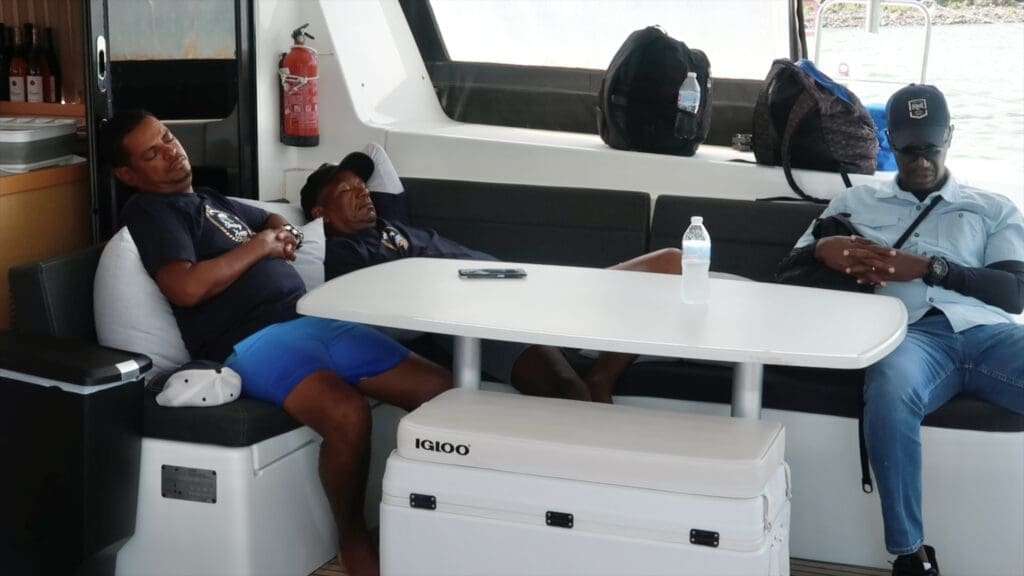
As we neared the entrance to the Pedro Miguel Lock, our advisor instructed us to slow down. The third boat in our raft could not maintain the necessary speed and was hours behind us. It was mentioned that we may need to wait for their arrival before proceeding. Ray voiced his frustration: we had burned a lot of diesel to make this trip in the time we did, and we’d be burning even more jogging around waiting. Guillermo heard him out and made a call. Moments later, we were told we’d be rafting up with the center boat from our first configuration and a tug boat in place of the third. We watched as the center boat took its place before we approached. The current was strong, so it was important everyone be on deck and paying attention. Ray brought us alongside, and we threw our lines to the center boat. They failed to secure the stern line to their boat. Combined with the current and slow speed we were asked to maintain, that caused us to lose control of our stern, sending us into the wall. Luckily, my dad was right there, ready with a fender. I had been positioned on the starboard bow, so I stepped aft and got a third fender in place before we made contact with the wall. Ray regained control, and our advisor gave step-by-step instructions to the other boat’s crew to keep us in place. The other boat’s captain instigated an argument, but Ray diffused the situation with a few choice words, and we all moved on.
The messenger lines were thrown again, and this time, one of the monkey fists hit the deck. Luckily, it didn’t do any damage, but I can see how those things could bust a window or a hatch… or your head! We’d need to detach and re-raft again after this lock, so we devised a better plan with the help of our advisor: we would set the lines up on our boat so that we could hand the end with the loop to them to simply place on their cleat, giving us more control of the situation. This plan, although an improvement, still didn’t sit right with Ray. He spoke to our advisor, and we were able to go through the rest of the locks alone. This meant all but one of us would have a job since all four lines would be on Sabado! We talked through the process with my parents and decided they’d handle the bow lines, the pros would take the stern, and I’d hang out up front if they needed any help. They were so excited to participate!
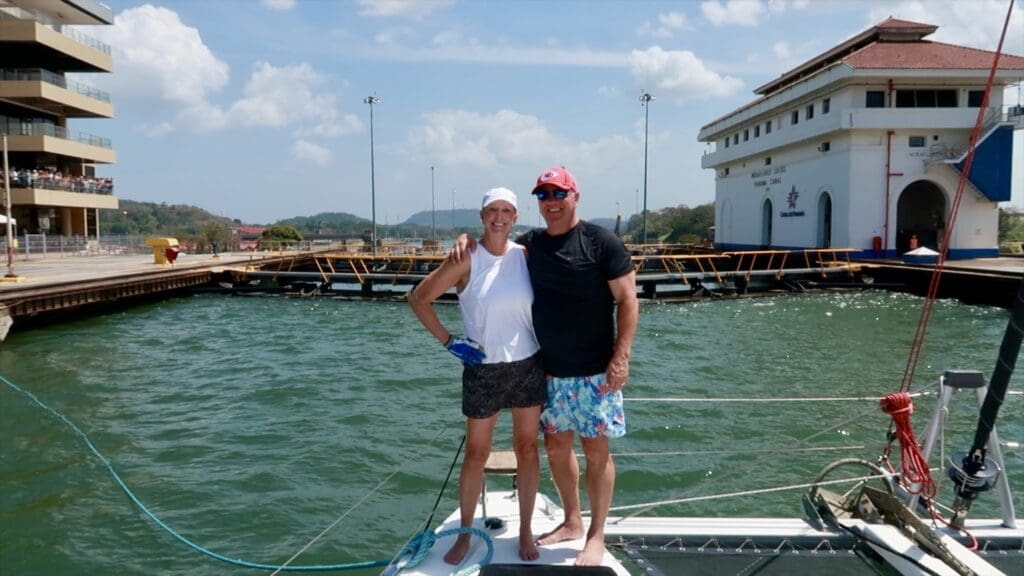
We detached from the raft and moved into the Miraflores Locks, the final two-step descent into the Pacific Ocean. My parents did an excellent job adjusting the lines to maintain tension and control of our position in the center of the lock while the folks on the observation deck watched. I had planned on making a sign to hold up in hopes someone would send us photos from their point of view, but I hadn’t had time with the schedule change. Luckily, someone tracked us down anyway!
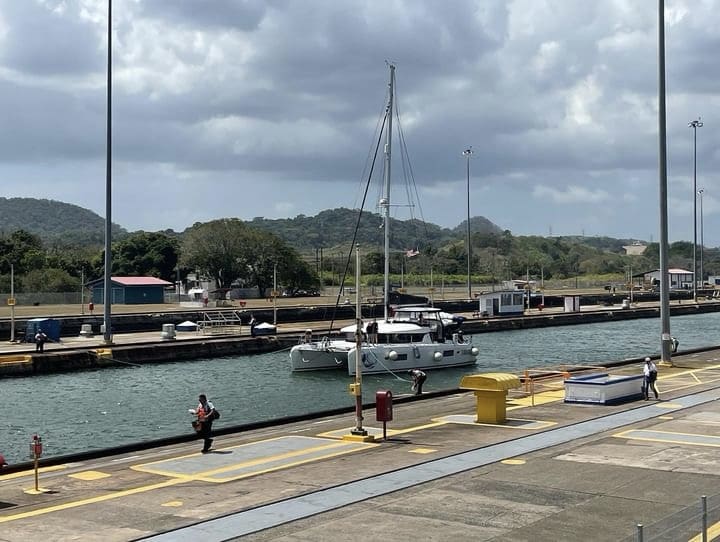
We cheered as the gate opened and Sabado officially entered the Pacific Ocean- a moment we will never forget. ❤️
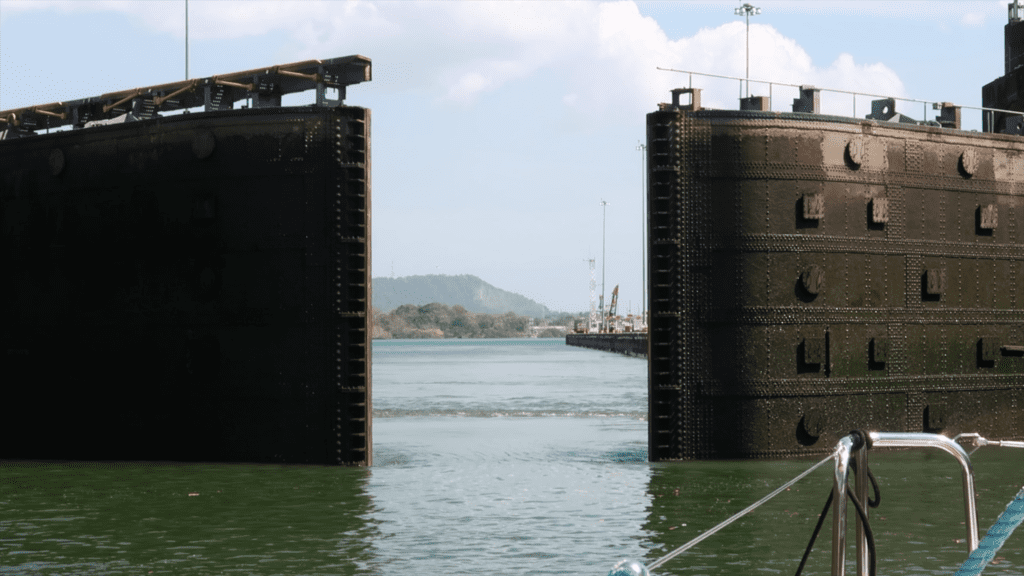
The pilot boat pulled up as we said goodbye to Guillermo. Our agent came for the line handlers and rental equipment shortly after that. We dropped our anchor and celebrated with a glass of wine- we were in the Pacific Ocean!
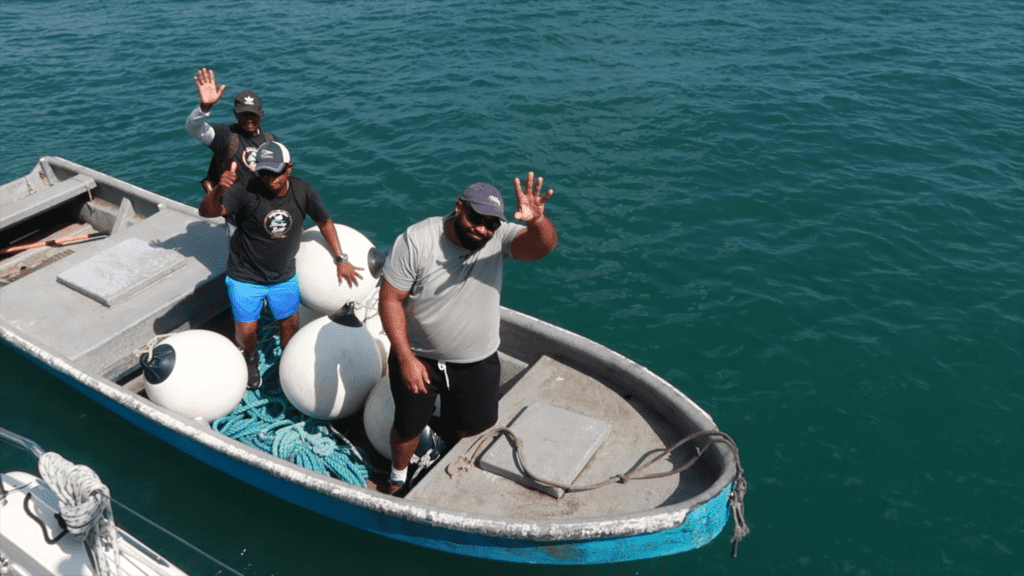
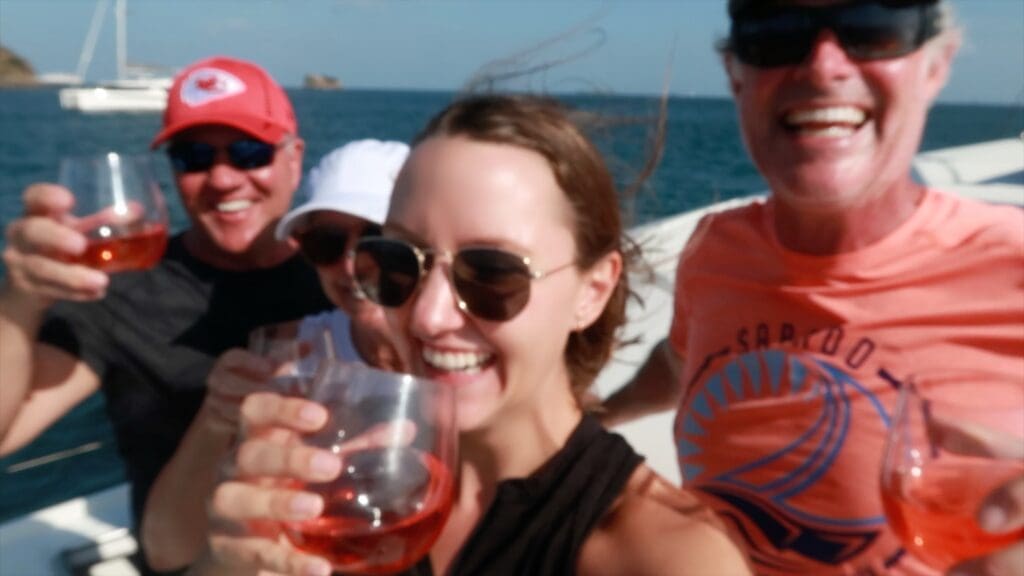
The Details
Agent info: Stanley Scott, navierastanleys.a@gmail.com
Agent fee: $400.00
4 Lines (rental fee): $80.00
6 Fenders (rental fee): $120.00
Cruising permit: $185.00
Canal fee: $1,960.00
Inspection fee: $75.00
Security charge: $165.00
Bank fee: $25.00
EDCS: $50.00
Line handlers: $120.00 per person per day
Notes: If we were to go through the canal again, we would hire Stanley in a heartbeat. After my initial email to him in December, we began communicating via WhatsApp, where it was common to get a response from him in less than 5 minutes. I had heaps of questions and he always gave me detailed and prompt responses, usually including the phrase, “…but don’t worry, I will handle that!”. He also offers payment via credit card for all fees, saving you a nerve-racking walk through the city with loads of cash on you. We gave an additional cash tip to our line handlers and our advisor after our transit, but that is not common or expected.
The Food
Disclaimer: If you fail to provide 3 hot meals and enough bottled water during your transit, you will be charged an exorbitant amount for supplies to be provided and delivered to your boat.
Drinks: We kept bottled water and canned Coca-Cola in the cockpit fridge for everyone to grab as needed- the Coca-Cola was a hit! We also periodically offered hot coffee and tea.
Breakfast: Toast with butter, scrambled eggs, and bacon. I plated everything individually, alongside a self-serve fruit platter, quartered muffins, ketchup, and hot sauce.
Lunch: Chicken chili, I used the meat from two rotisserie chickens and eyeballed the rest of the ingredients to get the ratio I wanted. I couldn’t find fire-roasted tomatoes or green chilis at the grocery store in Colón, so I used canned diced tomatoes and salsa verde, which turned out great! I prepared this before the transit and stored it in the fridge. I reheated it in a large pot before serving (you can add chicken broth while reheating to thin it out if needed). I dished up individual bowls and put out self-serve toppings: sliced jalapeño, shredded cheese, cilantro, sour cream, sliced avocado, and tortilla chips alongside a raw veggie platter with hummus!
Snacks: I kept a jar of trail mix and a bag of potato chips on the cockpit table all day and told the guys they were welcome to any fruit in our hammock. I also baked some chocolate chip cookies ahead of time that I set out in the afternoon.
Dinner: I prepared some garlic herb butter and bolognese before our transit. I used the butter to make garlic bread and reheated the bolognese for dinner with bucatini pasta the day of, served alongside a salad. This meal was fantastic- I’ll make another batch of this bolognese to keep in the freezer for our next long passage! I used bacon instead of pancetta and did not add the chicken broth or cream until I reheated it.
Dessert: I made a berry compote ahead of time by simmering frozen mixed berries with a little bit of honey, lemon juice, and lemon zest. I served this over homemade vanilla ice cream for dessert!
Notes: In the event of a two-day transit, I had planned on making the same breakfast, hot ham and cheese sliders with chips and rotisserie chicken with rice and roasted veggies for dinner. In general, I would recommend having an extra rotisserie chicken (or two!) in the fridge before your transit because you never know when people are going to show up or how long things will take, and it’s nice to have a protein ready to go! Our crew was very excited that I had purchased a local hot sauce, as Panamanians like things spicy.
Overall, we’d say our Panama Canal transit was a success. No damage was done to our boat, and all crew members left smiling with full tummies! Did I miss anything? Let me know in the comments.

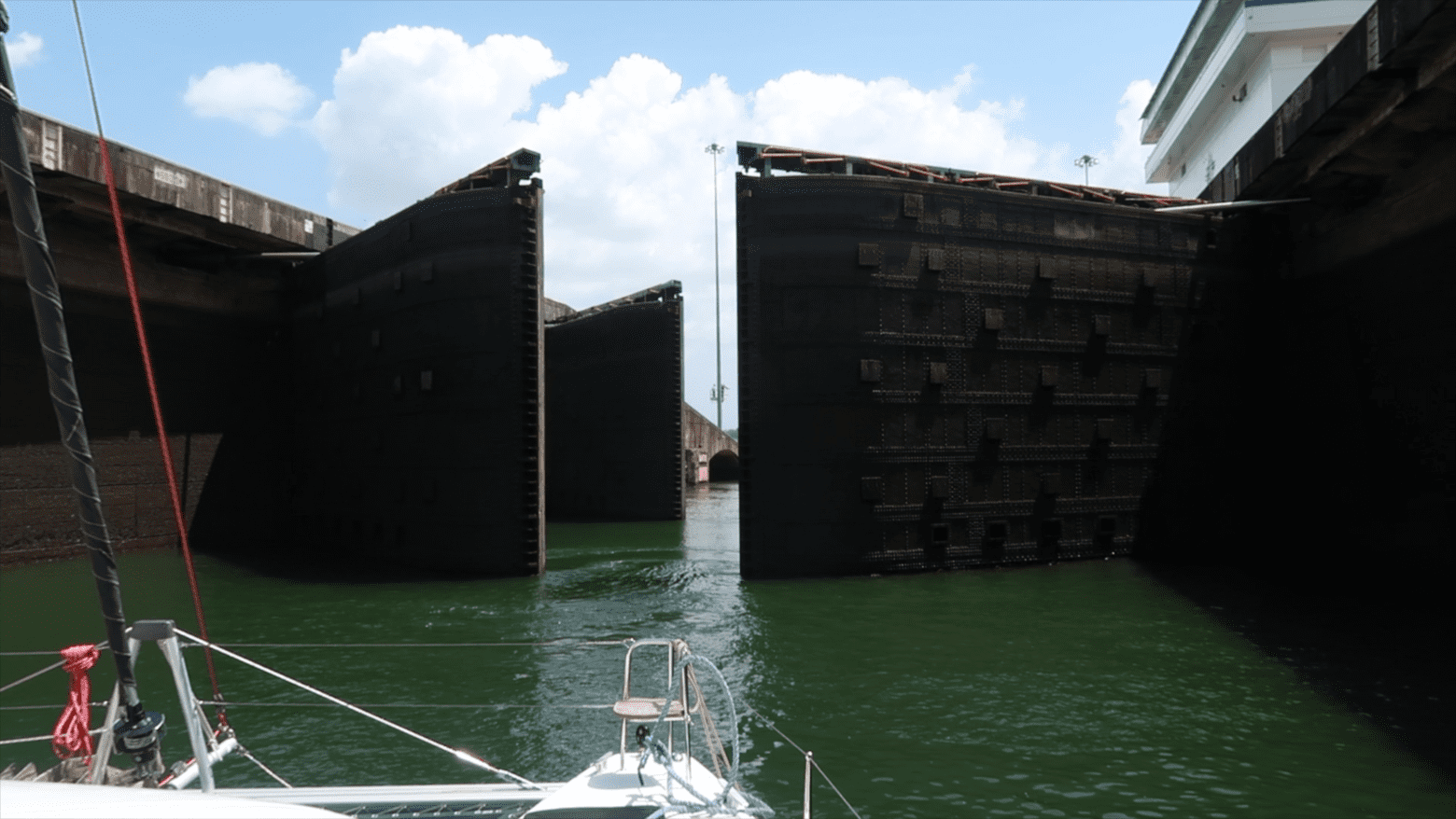
8 Responses
Holy great recap!! So glad that Craig and Dana made it. You will have so many great memories!! Cheers
Thank you! It was an incredible experience to share. ❤️
Everyone should have a Craig & Dana in their life❤️ Glad to hear transiting the Panama Canal was a success, and we can’t wait to see where the Pacific leads you!
Agreed! ❤️ Looking forward to a new ocean full of adventures…
We are going to head through next Feb in our 42′ Manta and this blog is incredibly helpful – thank you! Much appreciated
So glad you’ve found this helpful! Wishing you a smooth transit.
One question – why did you have to rent lines and fenders? Thanks
We didn’t have 4 lines that met the requirements, and the extra large fenders are nice to have depending on your raft configuration- you want maximum padding between your boat and those walls, or if you get paired with a large ship! Most cruisers rent.